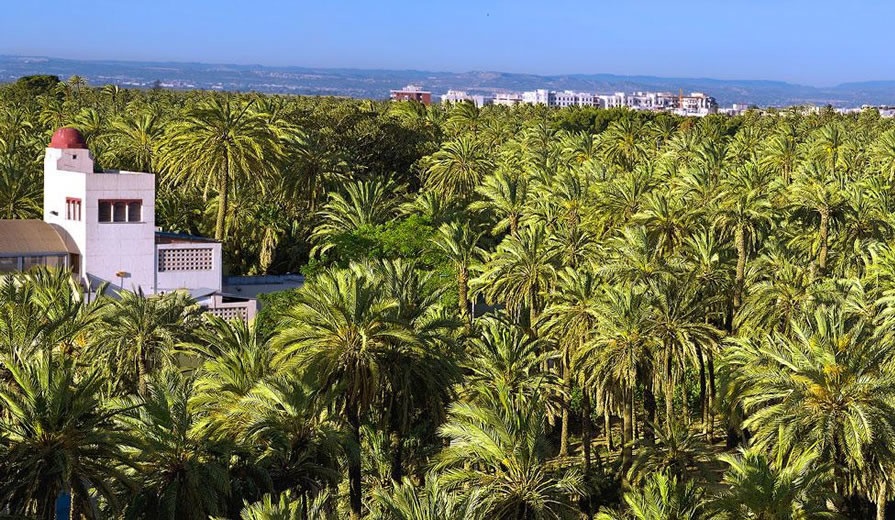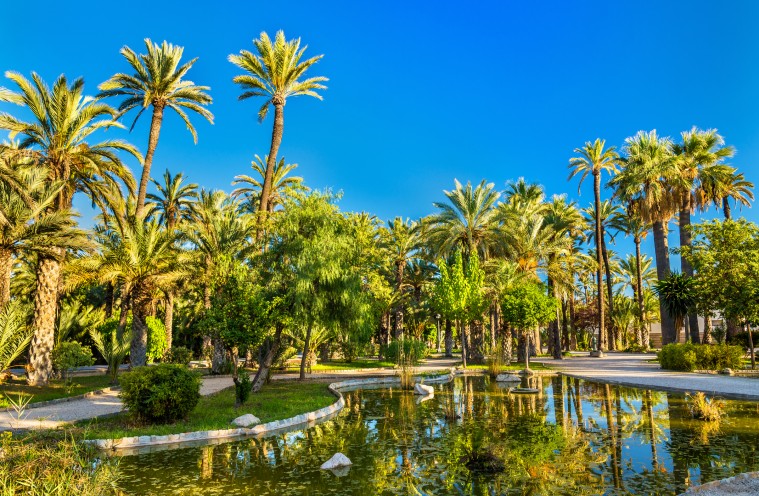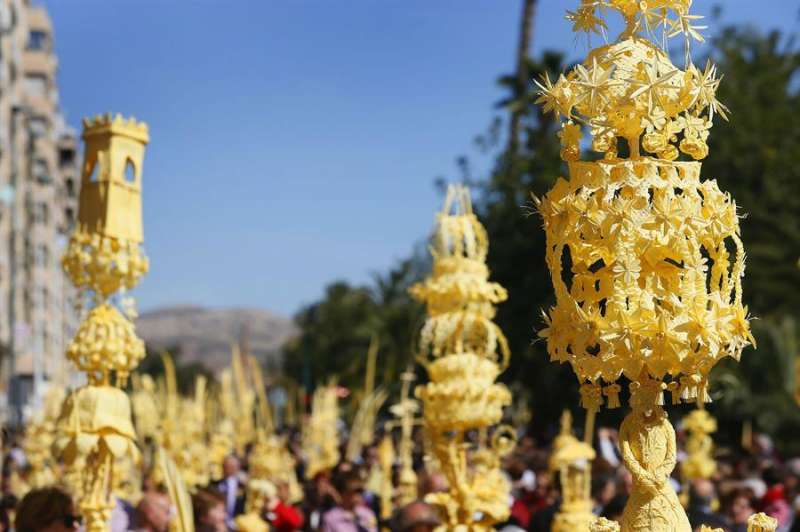The Palmeral (palm groves) of Elche has over 200,000 palm trees and represent a remarkable example of the transference of a characteristic landscape from one culture and continent to another, in this case from North Africa to Europe. The palm grove or garden is a typical feature of the North African landscape, which was brought to Europe during the Islamic occupation of much of the Iberian Peninsula and has survived to the present day at Elche.
This is the only palm grove of its type anywhere on the European continent, which makes it an exceptional landscape in this geographical context. Arab geographers and European travellers have testified to this exceptional quality throughout history. In addition to the authentic wild forest, many palm trees are cultivated in gardens, the remains of Arab agriculture established over eight centuries ago on the Iberian Peninsula. Archaeological data from the Iberian and Roman periods indicate that these plantations are in fact much older than the Arab palm grove. There is also what survives of a settlement or an urban plan, which can be seen from the cartography of the region. The central core of the town is surrounded by a series of palm gardens before reaching the rural area, where these are more widely scattered, even appearing to be natural woods, without human involvement. Palms also form an essential component of the culture of Elche, manifesting itself in many ways - the processions on Palm Sunday, the Night of the Kings, the town's coat of arms. The origins of the Elche palm grove are attributed to the Phoenicians and Carthaginians in the 1st millennium BC, since dates formed part of their diet. It was with the Arab invasion in the 8th century AD that they began to be cultivated; a network of complex irrigation canals enabled the brackish waters of the Vinalopó River to be used as this area has an annual rainfall of only 300 mm (12 in) The town was later moved northwards to a new location and surrounded by palm groves, so as to recreate a landscape reminiscent of that of North Africa, from where the new settlers came.


Elche was recaptured in 1265 during the reign of Jaime I and its lands were redistributed. The fertile lands on the left bank, irrigated by the main canal (Sequia Major) were granted to those who assisted in the Reconquista; this area contained many groves of date palms, some of which survive to the present day. There were no groves on the right bank (the Magram), where the lands were assigned to Muslim vassals (Moriscos); however, despite the lower fertility of this area, its farmers achieved a high degree of productivity, which was to degenerate sadly when the Moriscos were expelled in 1606.
The date palm trees of Elche are a dioecious species native to western Asia and North Africa. They can grow to a height of more than 30 m and live for over 300 years. The palm groves form a compact group in the eastern part of the town. The boundaries of the plots (huertos) are rectilinear, so they are mostly square or rectangular (a few triangular). They are bounded by "cascabots" (fences of plaited dried palm leaves) or plastered walls of undressed stone 1-2 m high. The trees are planted in single or double rows, following the lines of the irrigation canals. They produce dates for human consumption and the 'White Palm' leaves, used widely all over the Iberian Peninsula for decoration and processional use on Palm Sunday as one may have seen on sale over Easter in many cities around the country.

This area is clearly defined by the natural feature of the Vinalopó River, the historic centre of Elche, and recently developed perimeter areas zoned for non-residential use.
Spaces open to visitors today include the Municipal Park (with some singular buildings and fountains with neo-Arabic inspiration), the Huerto del Cura Garden (declared a National Artistic Garden), the El Palmeral Museum (located in the Huerto de San Plácido garden), and the Route of El Palmeral (which goes through traditional palm groves, and the Filet de Fora palm park)